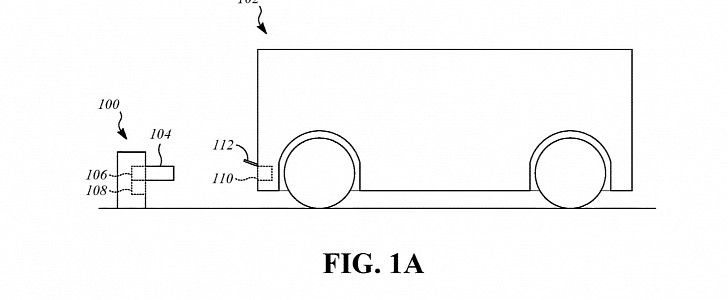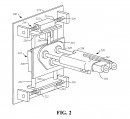The infamous Apple Car is still nowhere to be seen, and while information on the project comes and goes, the Cupertino-based tech giant has tried to remain as tight-lipped as possible on this topic.
This doesn’t necessarily mean Apple is no longer eyeing the automotive sector, and even though it may after all not launch its very own car, it’s still working on a series of other related technologies.
One of them is what’s being called a “charging station with passive alignment mechanism,” a new system covered by Apple in a recent patent that was filed in May and approved in October.
As you can see in the drawings included by Apple in the patent (and also added to the photo gallery here), Apple’s passive charging station can be installed in any garage and is based on a rather simple approach, with the car’s charging point simply sliding into the charger when parking.
Furthermore, Apple envisions more advanced implementations of the system where the connector could magnetically attach to the port without any user input.
“A charging station for an electric vehicle includes a passive alignment mechanism that includes a longitudinal translation stage that allows motion in a longitudinal direction, a charging plug connected to the passive alignment mechanism, and a releasable connector. The releasable connector resists motion of the longitudinal translation stage in a connected position when a magnitude of an external force applied in the longitudinal direction is below a threshold. The releasable connector moves from the connected position to a released position to allow motion of the longitudinal translation stage when the magnitude of the external force applied in the longitudinal direction is above the threshold,” the abstract section of the patent reads.
Of course, it’s important to keep in mind this is just a patent for the time being and there’s no guarantee it would ever enter the mass-production stage.
But on the other hand, considering it’s a new technology Apple created this year, it could be living proof the iPhone maker hasn’t completely given up on plans to expand in the automotive market in one way or another.
One of them is what’s being called a “charging station with passive alignment mechanism,” a new system covered by Apple in a recent patent that was filed in May and approved in October.
As you can see in the drawings included by Apple in the patent (and also added to the photo gallery here), Apple’s passive charging station can be installed in any garage and is based on a rather simple approach, with the car’s charging point simply sliding into the charger when parking.
Furthermore, Apple envisions more advanced implementations of the system where the connector could magnetically attach to the port without any user input.
“A charging station for an electric vehicle includes a passive alignment mechanism that includes a longitudinal translation stage that allows motion in a longitudinal direction, a charging plug connected to the passive alignment mechanism, and a releasable connector. The releasable connector resists motion of the longitudinal translation stage in a connected position when a magnitude of an external force applied in the longitudinal direction is below a threshold. The releasable connector moves from the connected position to a released position to allow motion of the longitudinal translation stage when the magnitude of the external force applied in the longitudinal direction is above the threshold,” the abstract section of the patent reads.
Of course, it’s important to keep in mind this is just a patent for the time being and there’s no guarantee it would ever enter the mass-production stage.
But on the other hand, considering it’s a new technology Apple created this year, it could be living proof the iPhone maker hasn’t completely given up on plans to expand in the automotive market in one way or another.










